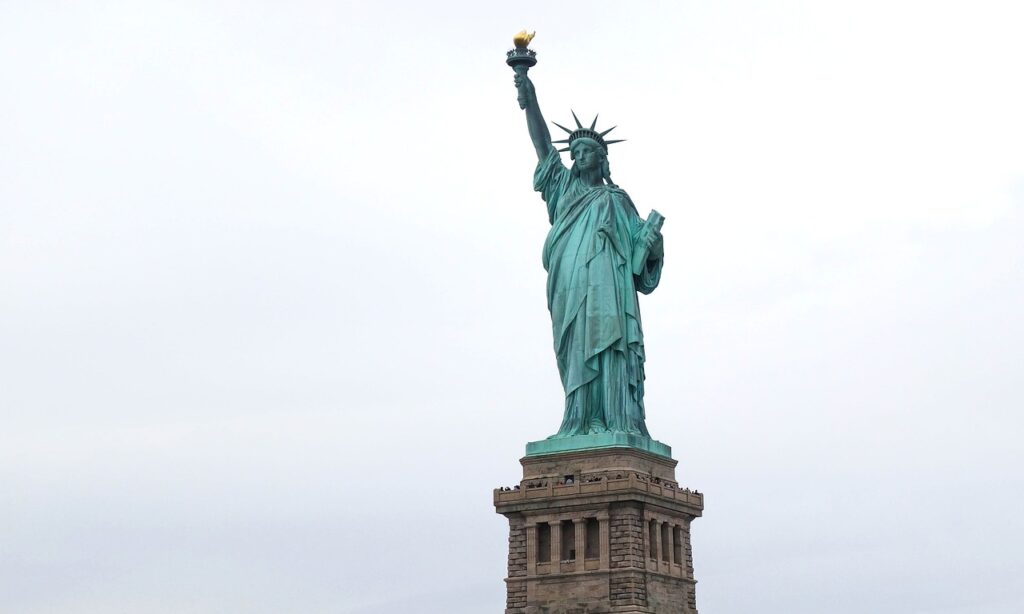The Statue of Liberty, one of the most iconic symbols of freedom and democracy, stands proudly on Liberty Island in New York Harbor. A gift from France to the United States in 1886, this colossal neoclassical sculpture has welcomed millions of immigrants and visitors to the shores of America. In this article, we delve into the history, significance, and latest updates about the Statue of Liberty, ensuring you have a comprehensive understanding of this monumental masterpiece.
The History of the Statue of Liberty

Origins and Construction
The idea for the Statue of Liberty was conceived by Édouard René de Laboulaye, a French political thinker and abolitionist, who envisioned a monument that would commemorate the centennial of American independence and celebrate the enduring friendship between France and the United States. The project was spearheaded by French sculptor Frédéric Auguste Bartholdi, who designed the statue, and Gustave Eiffel, the engineer behind the Eiffel Tower, who designed its internal framework.
Construction of the statue began in France in 1875, and it was completed in 1884. The statue was then disassembled and shipped to the United States in 214 crates. It was reassembled on Liberty Island (then known as Bedloe’s Island) and officially dedicated on October 28, 1886.
Design and Symbolism
The Statue of Liberty, officially titled “Liberty Enlightening the World,” stands at 305 feet (93 meters) from the base to the tip of the torch. The statue itself is 151 feet (46 meters) tall, while the pedestal adds an additional 154 feet (47 meters).
The statue’s design is rich in symbolism:
- Crown: The seven spikes on the crown represent the seven continents and seven seas, symbolizing universal liberty.
- Torch: The torch held high in her right hand symbolizes enlightenment and the path to liberty.
- Tablet: In her left hand, she holds a tablet inscribed with the date of the American Declaration of Independence, July 4, 1776.
- Chains: Broken chains lie at her feet, representing freedom from oppression and tyranny.
The Significance of the Statue of Liberty

A Symbol of Freedom and Democracy
The Statue of Liberty has long been a symbol of freedom and democracy, not just for Americans but for people around the world. For millions of immigrants who arrived in the United States by ship in the late 19th and early 20th centuries, the statue was the first sight of their new home, representing hope and the promise of a better life.
Cultural Impact
The Statue of Liberty has also had a profound cultural impact, appearing in countless films, television shows, and works of literature. It has become a universal symbol of freedom and is often used to represent the ideals of liberty and justice.
Tourism and Economic Impact
Today, the Statue of Liberty is one of the most visited tourist attractions in the United States, drawing millions of visitors each year. The statue and Liberty Island are managed by the National Park Service, and visitors can explore the museum, climb to the crown, and enjoy breathtaking views of New York City and the surrounding harbor.
Latest News and Updates

Restoration Efforts
In recent years, the Statue of Liberty has undergone several restoration projects to preserve its structural integrity and appearance. The most recent restoration, completed in 2019, focused on upgrading the statue’s museum and improving visitor facilities. The new Statue of Liberty Museum, which opened in May 2019, features interactive exhibits, historical artifacts, and the original torch, which was replaced in 1986.
Climate Change and Rising Sea Levels
One of the latest concerns regarding the Statue of Liberty is the impact of climate change and rising sea levels. Liberty Island, like many coastal areas, is vulnerable to flooding and storm surges. In response, the National Park Service has been working on resilience projects to protect the statue and its surrounding infrastructure from the effects of climate change.
Virtual Tours and Digital Engagement
In response to the COVID-19 pandemic, the National Park Service introduced virtual tours of the Statue of Liberty, allowing people from around the world to explore the monument online. These virtual experiences have proven to be incredibly popular, offering an immersive way to learn about the statue’s history and significance.
Commemorative Events
The Statue of Liberty continues to be a focal point for commemorative events and celebrations. In 2021, the statue was illuminated in green to celebrate St. Patrick’s Day, and in 2022, it was lit in the colors of the Ukrainian flag as a show of solidarity with the people of Ukraine during the Russian invasion.
Visiting the Statue of Liberty
Planning Your Visit
If you’re planning a visit to the Statue of Liberty, here are some tips to make the most of your experience:
- Tickets: Purchase tickets in advance, as they often sell out, especially during peak tourist seasons. Tickets can be bought online through the official National Park Service website or authorized vendors.
- Security: Be prepared for airport-style security screening before boarding the ferry to Liberty Island.
- Accessibility: The Statue of Liberty is accessible to visitors with disabilities, with elevators available to reach the pedestal and museum. However, access to the crown requires climbing 162 steps and is not recommended for those with mobility issues.
What to See and Do
- Pedestal and Crown: Climb to the pedestal or crown for stunning views of New York Harbor. Note that crown access requires a special ticket and involves a strenuous climb.
- Museum: Visit the Statue of Liberty Museum to learn about the statue’s history, construction, and significance through interactive exhibits and historical artifacts.
- Ellis Island: Combine your visit with a trip to nearby Ellis Island, where you can explore the Ellis Island National Museum of Immigration and learn about the experiences of the millions of immigrants who passed through its doors.




Conclusion
The Statue of Liberty remains one of the most enduring symbols of freedom, democracy, and hope. From its origins as a gift from France to its role as a beacon for immigrants and a global icon, the statue continues to inspire and captivate people around the world. Whether you’re planning a visit, exploring its history, or keeping up with the latest news, the Statue of Liberty is a monument that truly stands the test of time.
As we look to the future, the Statue of Liberty will undoubtedly continue to play a vital role in American culture and history, reminding us of the values of liberty, equality, and opportunity that it represents. So, whether you’re standing in its shadow or admiring it from afar, the Statue of Liberty is a testament to the enduring spirit of freedom that defines the United States.

